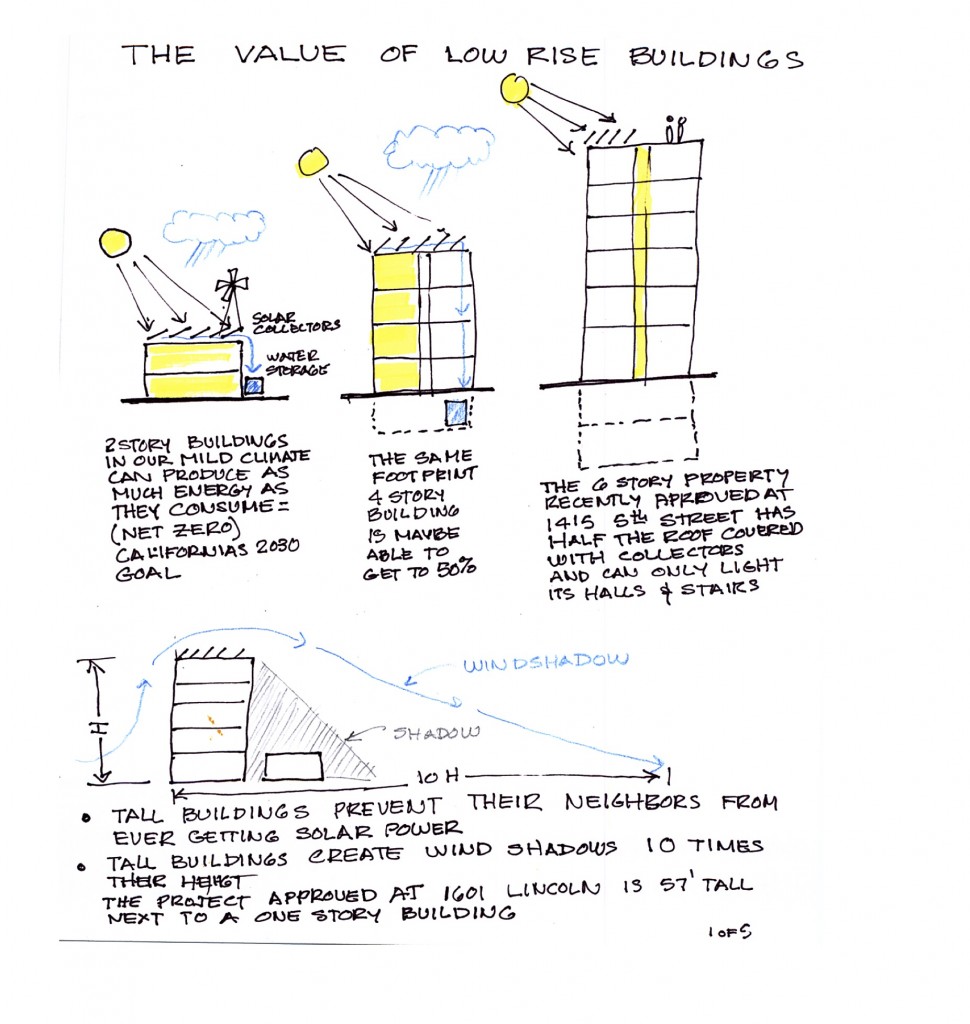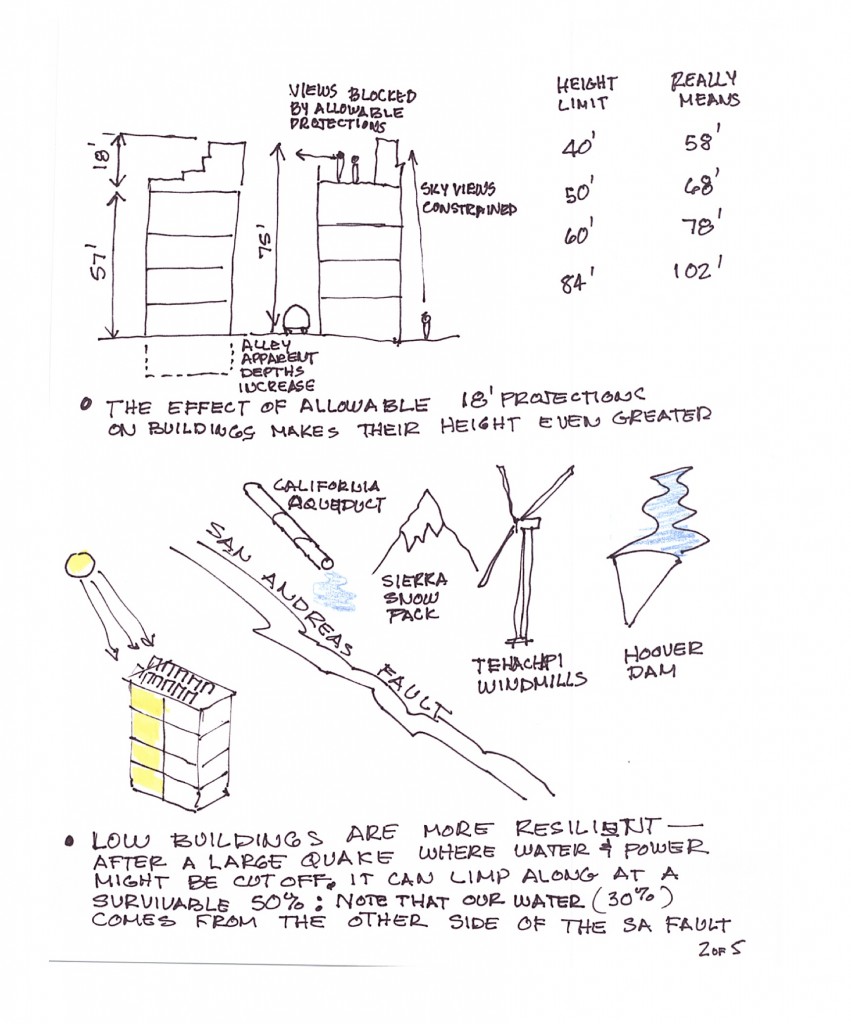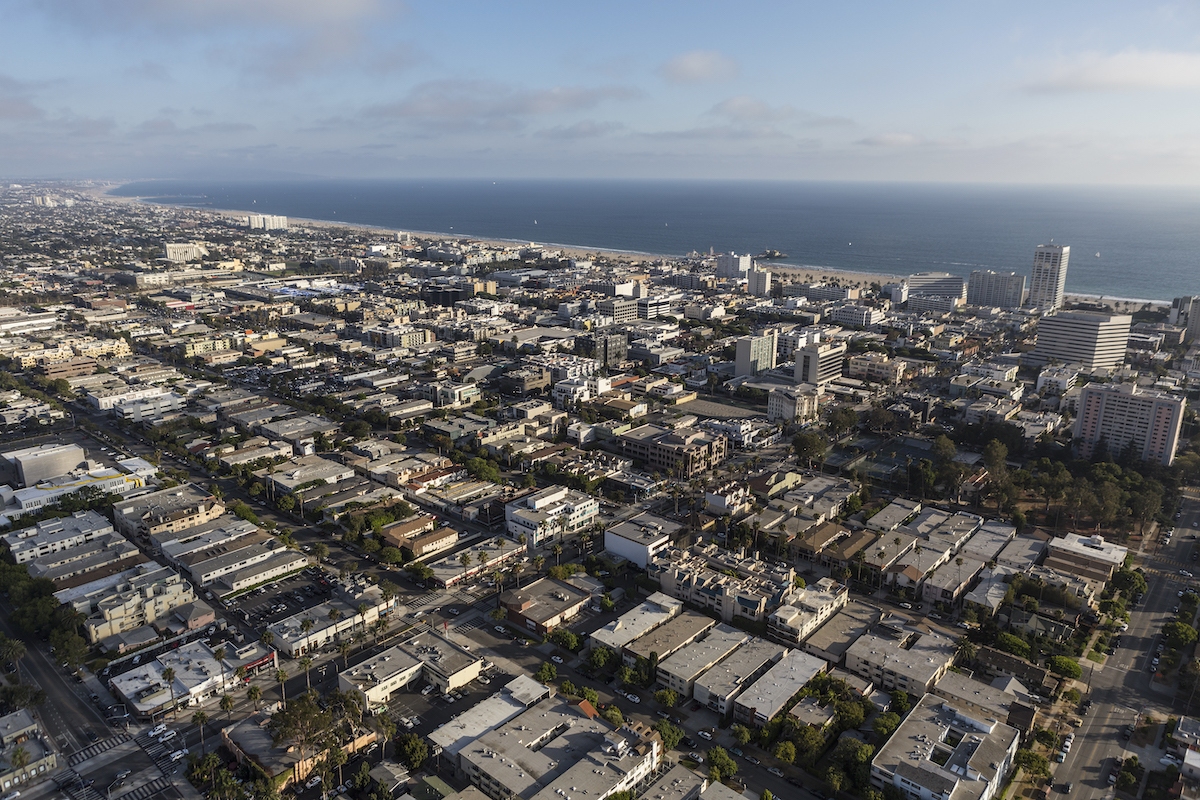
Santa Monica Architects for a Responsible Tomorrow has long advocated for a low rise city: that is a city primarily with buildings no taller than four stories. Six years ago we discussed the virtues of a low-rise city concept for Santa Monica. Today, those virtues remain in place, and have acquired even more importance since we wrote about it last time. It is worth revisiting the earlier discussion (with some minor alterations for today’s realities):
In this first part of two articles, we will dig deeper and discuss the benefits of such a low rise city. The most important benefit is sustainability. Because the cleanest, nearest energy source is the sun, which is relatively abundant here, so we can design our buildings for maximum photovoltaic gain primarily with roof top solar collectors and with future advanced photovoltaic glazings:

The problem with high rise buildings is that they make bad neighbors by shading and blocking lower neighbors from getting their photovoltaic sunlight and block their access to the natural afternoon breezes that could be used to offset the need for expensive energy-consuming air conditioning. Thus tall buildings create the adverse effect of “a race to the sky “as buildings try to outdo one another to get higher to get sun access for power and access to wind. Technologies are being developed that may allow photovoltaic gain from walls, windows, and other surfaces, but we need to reduce energy consumption TODAY as we know from the Paris Climate Conference’s warnings. So the limited areas of roofs are today our best energy source. With low-rise buildings, the rooftop supply available for solar energy is inevitably more in line with the energy demands of the building than it is for mid or high rises.
Three to five story low rise buildings are typically 33′ to 55’, but because because of allowable parapets, elevators etc., up to 18 additional feet of height is allowed which can block views, and creates canyonized alleys and streets which do not fit the friendly ambiance of our city.

Finally low rise buildings are more survivable (resilient) in the event of a catastrophic earthquake when the city will be limping along at reduced water and power availability . This is particularly true if the quake occurs on the San Andreas fault that separates the city from its far flung energy and water sources.
In next week’s part two article we will discuss the other numerous advantages of low rise buildings to our city’s future.
Mario Fonda-Bonardi for SMa.r.t.
Santa Monica Architects for a Responsible Tomorrow: Mario Fonda-Bonardi AIA, Planning Commissioner; Ron Goldman, Architect FAIA; Daniel Jansenson, Architect, Building & Fire-Life Safety Commissioner; Robert H. Taylor, Architect AIA; Thane Roberts, Architect; Sam Tolkin, Architect; Marc Verville accountant ret.; Michael Jolly, AIRCRE













